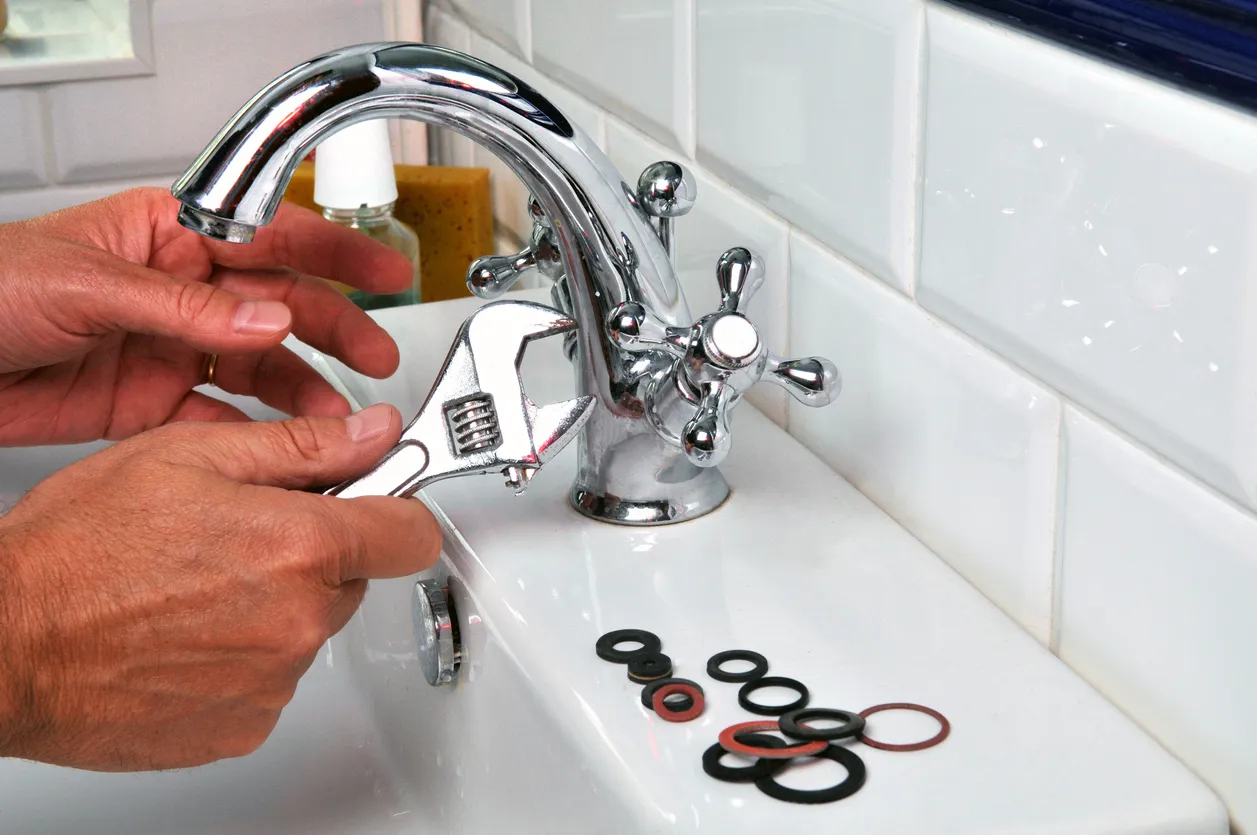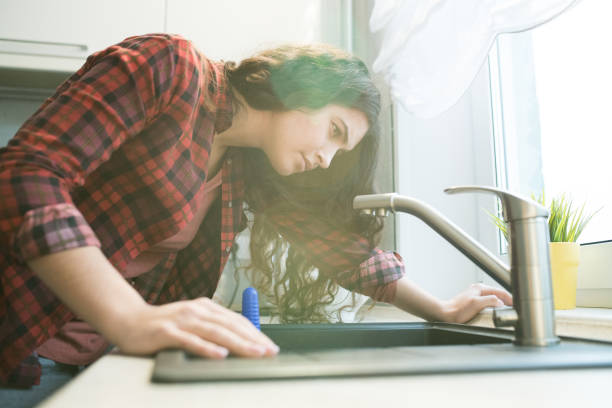Understanding the Significance of Dealing with a Leaking Faucet
Understanding the Significance of Dealing with a Leaking Faucet
Blog Article
We've stumbled on the article involving Why It's Important to Fix Leaky Faucets down the page on the internet and figured it made perfect sense to relate it with you on this page.

Dripping taps might appear like a minor hassle, however their influence exceeds simply the inconvenience of the noise. From drainage to incurring unnecessary monetary prices and health risks, overlooking a leaking tap can lead to various repercussions. In this post, we'll delve into why it's critical to address this typical home problem without delay and properly.
Wastage of Water
Environmental Influence
Trickling taps contribute considerably to water waste. According to the Environmental Protection Agency (EPA), a solitary faucet trickling at one drip per secondly can squander greater than 3,000 gallons of water per year. This not just strains water resources however additionally impacts environments and wildlife based on them.
Financial Costs
Enhanced Water Bills
Beyond the ecological influence, dripping faucets can blow up water costs considerably. The built up wastage with time equates right into greater utility expenditures, which could have been prevented with timely fixings.
Potential Residential Or Commercial Property Damage
Additionally, prolonged dripping can bring about damage to fixtures and surface areas surrounding the tap. Water accumulation can cause discoloration, rust, and also architectural issues if left unattended, resulting in extra repair work prices.
Wellness Problems
Mold And Mildew and Mold Development
The constant visibility of wetness from a trickling tap develops a suitable environment for mold and mildew and mildew growth. These fungis not just endanger interior air high quality but also present health dangers, particularly for people with breathing conditions or allergies.
Waterborne Conditions
Stagnant water in dripping taps can come to be a breeding place for bacteria and other virus, raising the danger of waterborne illness. Pollutants such as Legionella germs flourish in stationary water, possibly bring about severe ailments when ingested or inhaled.
Do it yourself vs. Expert Repair
Pros and Cons of Do It Yourself Fixing
While some may try to deal with a dripping faucet themselves, DIY repair services come with their own collection of challenges. Without correct understanding and devices, do it yourself efforts can exacerbate the problem or bring about insufficient repairs, extending the issue.
Advantages of Employing a Specialist Plumber
Employing a professional plumber makes certain that the underlying reason for the leaking faucet is resolved successfully. Plumbings possess the knowledge and devices to diagnose and repair tap concerns successfully, saving time and minimizing the danger of additional damage.
Step-by-Step Overview to Fixing a Dripping Tap
Tools Needed
Before trying to deal with a trickling faucet, collect the required devices, including a flexible wrench, screwdrivers, substitute parts (such as washers or cartridges), and plumber's tape.
Typical Faucet Issues and Their Solutions
Determine the kind of faucet and the specific concern triggering the drip. Typical troubles consist of worn-out washers, rusty valve seats, or malfunctioning O-rings. Refer to supplier directions or online tutorials for step-by-step support on fixings.
Preventive Measures
Normal Upkeep Tips
To prevent leaking taps, perform routine upkeep such as cleaning up aerators, examining for leakages, and changing worn-out parts without delay. Furthermore, think about installing water-saving tools or updating to a lot more effective fixtures.
Importance of Prompt Repairs
Dealing with dripping faucets as soon as they're noticed stops more water waste and prospective damage, ultimately saving both water and cash in the future.
Impact on Residential Property Value
Perception of Well-Maintained Building
Maintaining a home in good condition, consisting of dealing with upkeep problems like dripping taps, boosts its viewed value and charm amongst potential purchasers or occupants.
Impact on Resale Worth
Residences with well-kept plumbing fixtures, including taps, command higher resale values in the realty market. Addressing dripping taps can contribute to a favorable impression during property examinations and settlements.
Ecological Obligation
Specific Contribution to Conservation
Taking duty for repairing leaking taps straightens with broader initiatives toward water preservation and ecological sustainability. Every person's activities collectively make a significant impact on maintaining precious resources.
Lasting Living Practices
By focusing on punctual fixings and taking on water-saving behaviors, people add to sustainable living methods that profit both existing and future generations.
Verdict
Attending to a trickling tap surpasses plain benefit; it's an important step toward saving water, lowering economic prices, and guarding wellness and residential property. Whether through DIY fixings or specialist help, doing something about it to take care of dripping taps is a tiny yet impactful means to advertise responsible stewardship of resources and add to a healthier, extra sustainable future.
How to Fix a Dripping or Leaky Faucet
A leaking faucet is one of the most common problems that homeowners encounter, but it being commonplace doesn’t make it any less annoying. The constant drip drip drip of a leaking bathtub faucet, showerhead, or sink tap can disturb your home’s serenity. Left neglected, a dripping faucet can also result in higher water bills and discoloration or mold growth in your sink or plumbing fixtures.
Fortunately, you don’t have to be a trained plumber to know how to stop a dripping faucet. With some basic tools, replacement parts, and a little patience, leaky faucet repair is a breeze. In this article, we’ll explain what causes dripping faucets and how you can fix them.
What Causes a Leaking Faucet?
Kitchen and bathroom faucets come in all manner of designs, but most involve some combination of valves, O-rings, seals, and washers. The O-ring is usually the weakest link, but any one of these pieces can wear down over time. Heat, moisture, temperature fluctuations, minerals, mold, and movement can contribute to warping and corrosion, breaking the watertight seal. This just comes with the territory of being a homeowner. Everything is always subject to wear and tear, and some component parts of your appliances and fixtures need to be replaced on occasion. At least replacement O-rings are cheap!
More rarely, dripping faucets can be a symptom of excessively high water pressure. Were this the case in your home, you would probably notice that the leak is not isolated to one faucet. Water pressure issues are harder to resolve on your own. We recommend contacting a professional plumber if you suspect your water pressure is too high.
How to Fix a Dripping Faucet
Pipe wrench or monkey wrench Allen wrench set Screwdrivers Old towel or rag Shut off the water.
Before you do anything, you need to turn off the water to keep from drenching your kitchen or bathroom. You should find a valve under the sink and against the wall. Once you’ve turned this valve, try turning the faucet on to confirm that the water source has been cut off.
If you can’t locate your local valve for the faucet you’re working on, you can always shut off the water to the house at the main valve. Of course, this will prohibit anyone from using the sinks, showers, or toilets while you’re working on the faucet that’s giving you trouble.
Plug or block the drain.
You’ll be disassembling the faucet and removing some small bits of hardware. Plug the drain with a stopper or rag to avoid the possibility of a small screw falling into your P-trap.
Take apart the faucet assembly.
There are several varieties of kitchen and bathroom faucets, each with its own manner of assembly. For detailed instructions on how to disassemble your faucet, you can refer to the fixture’s manual or contact the manufacturer. If you know whether you have a ball, disc, cartridge, or compression faucet, you can find detailed schematics online.
In general, you need to begin by removing the faucet handles. You might notice a small screw that you’ll need to remove with a screwdriver or Allen wrench. If you don’t see any visible securing hardware, it’s likely hidden under a decorative cap that can be unscrewed or popped off with flathead screwdriver.
Remove each piece methodically, consulting a schematic when necessary. Take notes or arrange the pieces in such a way to make it easier to correctly reassemble the faucet later.
Remove the cartridge.
Once you’ve removed the handles and securing hardware, you should be able to remove the valve cartridge or stem. Some cartridges will slide right out. Other faucet models will require you to loosen a nut with a pipe wrench before you can remove the valve stem.
Examine the exposed hardware.
With the cartridge or stem removed, inspect the component parts. Check the rubber O-rings for wear and tear. Also examine the seat washer for corrosion or other damage. These pieces are usually the responsible parties for a dripping faucet, but it’s worth inspecting the other component parts while you have the faucet disassembled.
Find replacement parts.
Once you’ve identified which faucet component has failed, find an identical replacement. Your local hardware store should have O-rings, seat washers, and other standard components in stock. If you have a luxury or uncommon faucet, you may have to contact the manufacturer for a replacement part.
It’s a good idea to take your old parts with you to the hardware store so you can compare them with the store’s inventory and be sure you’re purchasing the correct replacement.
Reassemble the faucet.
With your new parts in hand, reconstruct the faucet and handles. Don’t be tempted to overtighten screws or nuts. You might think this could create a better seal, but it can instead damage or bend a delicate part of the assembly and create a new problem for you.
Turn on the water and test the faucet.
The only thing left to do is test your work. Unplug the sink, turn the water back on, and try the faucet. Congratulate yourself on a job well done!
https://www.libertyhomeguard.com/how-to-fix-a-dripping-or-leaky-faucet/

As a keen reader on , I imagined sharing that excerpt was really helpful. If you liked our article please do not forget to pass it around. Thanks for your time spent reading it.
Report this page